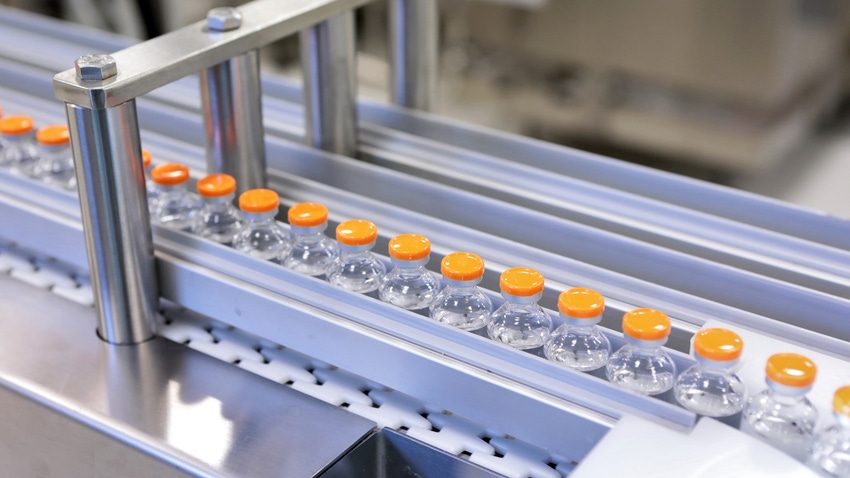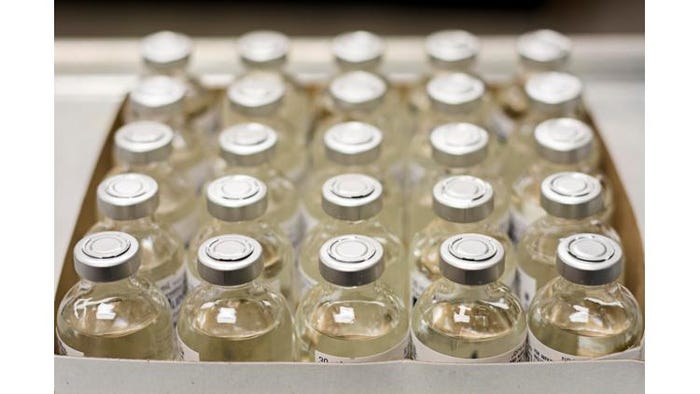Biopharmaceutical company uses label system to enhance ops

When biopharmaceutical company Bilthoven Biologicals (BBio) in the Netherlands recently implemented a label management system (LMS), its pharmaceutical packaging operation reaped myriad benefits, including lower labeling costs; reduced downtime; and streamlined IT support, label design and label inventory.
BBio wanted an LMS that would be compatible with its new SAP S/4HANA enterprise resource planning (ERP) software, integrating label printing with master data. The company chose NiceLabel LMS Enterprise software to centralize and standardize label production and to control and track labeling. Most of the company’s label printing occurs at one of its facilities, which uses about 25 printers supplied by two manufacturers.
Prior to the LMS implementation, BBio’s label production included paper labels for work in progress, product identification, boxes, pallets and shipping, plus synthetic labels for refrigerated samples. The company also used a variety of labeling software, which created a hefty support burden for the IT department and, in turn, contributed to unplanned downtime.
Furthermore, BBio’s manual processes—including quality inspection of printed labels—were time consuming and made compliance with pharmaceutical labeling regulations challenging.
Label design and production were performed by numerous employees, and BBio lacked an overview of its label systems and templates. Moving to a system in which labeling is integrated with master data overcame all these challenges, improving operational efficiency while assuring regulatory compliance.
The new label management system has enabled the company to centralize label design with a single designer and to use fewer templates, which improves label consistency and uniformity of design.
In addition, IT personnel now support one unified labeling system rather than several disparate systems, easing their support load considerably. Quality assurance (QA) is also easier, and QA labor costs are lower.

In addition, the new label-printing process has significantly decreased how many label variations BBio needs and has enabled the company to centralize purchasing of blank labels and label hardware. Instead of storing large quantities of many label variations, the company now uses a just-in-time inventory system for label stock. BBio reports that centralizing purchasing has enabled it to free up cash and be more “agile.”
Going forward, BBio plans to create a test-and-production environment to review label changes prior to production. The company also plans to expand its new label system to its quality control (QC) labs using web-printing capabilities from NiceLabel.
Martijn Huijbreghs, IT application manager with BBio, answers questions from Packaging Digest about the new system and describes its many benefits.
Prior to implementing the NiceLabel LMS Enterprise solution, how many label variations did BBio have?
Huijbreghs: That is hard to answer, because the label process was decentralized. It could be up to 20 label types that were initially targeted at the start of the project. Next to that, a second but much larger group of labels in use for all sorts of general applications existed but was not in scope.
So, the second group of labels was not originally included in the project?
Huijbreghs: The second group of labels was indeed not included in the LMS implementation at that time. We initially focused on the labels that were directly involved with processes in SAP. Today we are picking up those leftovers, and for each will be decided if it will be managed under NiceLabel, if its functionality can add value. Mostly that is a “yes” for QC labels, for which very often counters and external data are involved. But for some purposes, like the address label on a single letter, the office manager is better off with a standard office application like Dymo.
How many do you have now, after implementing the NiceLabel software and integrating it with your SAP S/4HANA system?
Huijbreghs: Currently, we are managing 11 label templates, which cover all labels for internal use that are directly related to goods receipt, manufacturing and the shipping process.
How were you able to reduce the number of label designers to just one? Isn’t the total volume of labels produced the same?
Huijbreghs: The total volume of labels actually has increased due to process changes in SAP. Reducing the number of designers was achieved by simply shifting the design responsibility to the application manager. Instead of having multiple operators designing their own labels for their own process, there is now one single person, which brings uniformity in the entire chain.
The labeling changes have enabled the company to free up cash reserves. Can you quantify that?
Huijbreghs: We haven’t done this calculation, because the implementation was part of a bigger SAP reimplementation project. In itself, the benefit of a centralized label solution goes beyond savings in material stocks. There are definitely gains in maintenance, knowledge and support.
The labeling changes have also enabled the company to operate in a more agile way. What does that mean, specifically? What are the benefits of being more agile?
Huijbreghs: Previously, producing almost every label was a process of its own, comprising dedicated software, hardware, consumables, designer and so on. When there was an issue that the operator could not solve, the IT department sometimes had to do a deep dive to figure out the process before it could even start fixing the issue.
Today, this is easy. Broken printers are instantly replaced, because we have them in stock. In case of a software issue, we now have in-house expertise and several external support backups in place. Adding new labels is also easy, because interfaces and automation are also in place. This makes us agile, with the ability to quickly solve issues, respond to changes and scale our business.
What QA tasks are easier to perform now and why?
Huijbreghs: The label process is now more automated. The entire content of the label previously was entered manually, but now it comes directly from a system that results in zero type errors. Also, the content is under control; the user cannot add or remove fields from the label. Used labels are added to a batch record and are part of the product release by quality assurance. They now can rely much more on the label to be correct.
What exactly is a test-and-production environment? How does it work?
Huijbreghs: To ensure the highest availability of applications, it is common practice to do a test drive of every change on a separate environment. You also need to have the ability to tweak settings without touching or disrupting your running production and to prevent the problem of unintentionally sending test labels to the shop floor. This can be achieved by having multiple environments.
If, for instance, a new patch or service pack for your operating system is released, you need to make sure that is does not impact your system.
How does NiceLabel’s web-printing functionality enable BBio to use the labeling system for QC?
Huijbreghs: Within QC, or any other department for that matter, there are a lot of labels in use for general applications. This includes, for example, the labeling of all sorts of materials in a QC laboratory, inventory labels on equipment, the labeling of waste containers and so forth.
By providing predefined label templates through applications like PowerForms or Webprint, the user no longer carries the burden of designing the label and making sure all appropriate hardware, software and consumables are in stock. He just enters the variables and presses “print.” Some users still have access to the design module and usually act as a “key user” to serve a small group of end users by designing these sorts of labels and making them available through Webprint.
____________________________________________________________________________________________
MinnPack 2019 (Oct. 23-24; Minneapolis) is where serious packaging professionals find technologies, education and connections needed to thrive in today’s advanced manufacturing community. See solutions in labeling, food packaging, package design and beyond. Attend free expert-led sessions at multiple theaters around the expo.
About the Author(s)
You May Also Like




